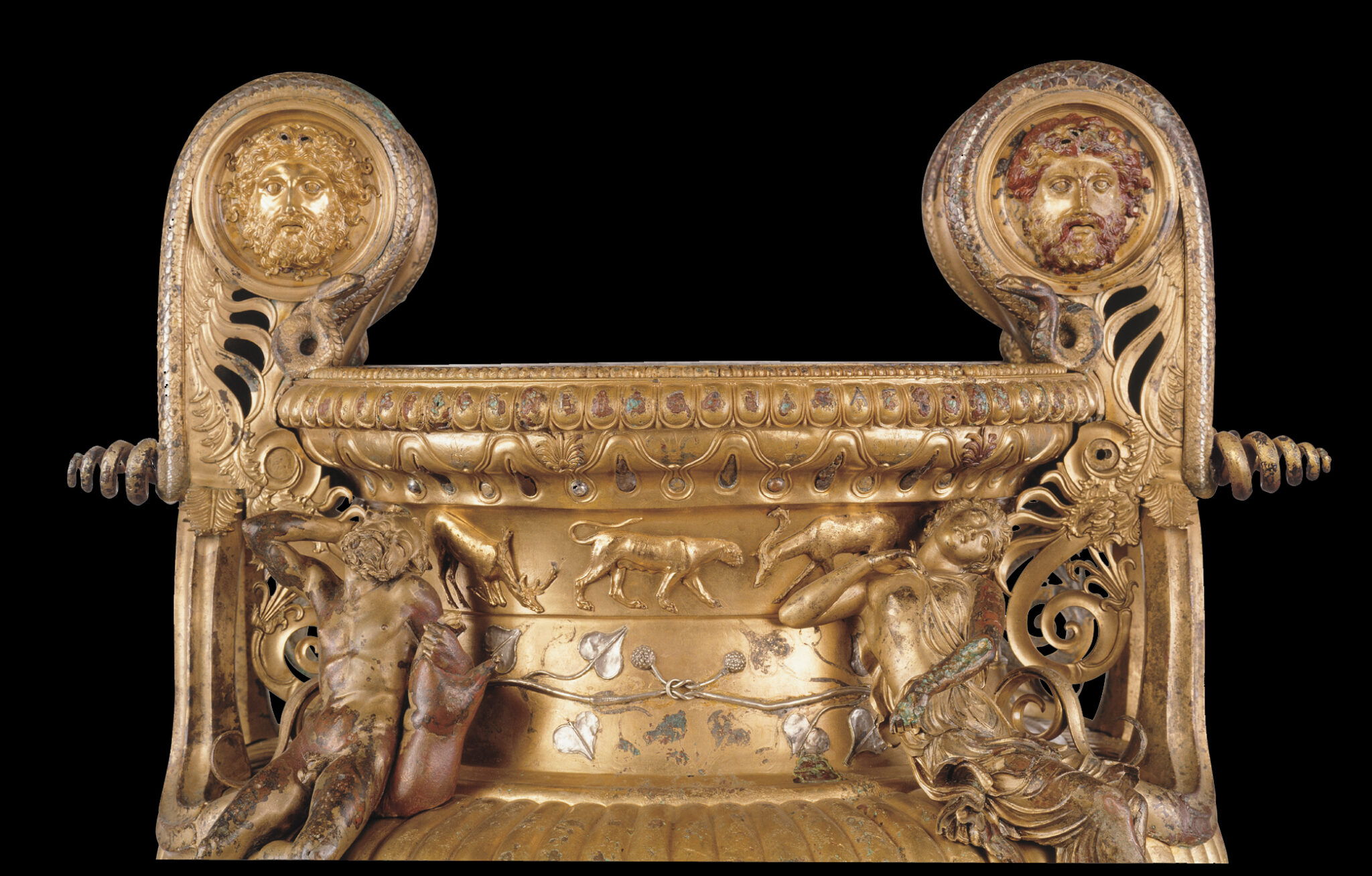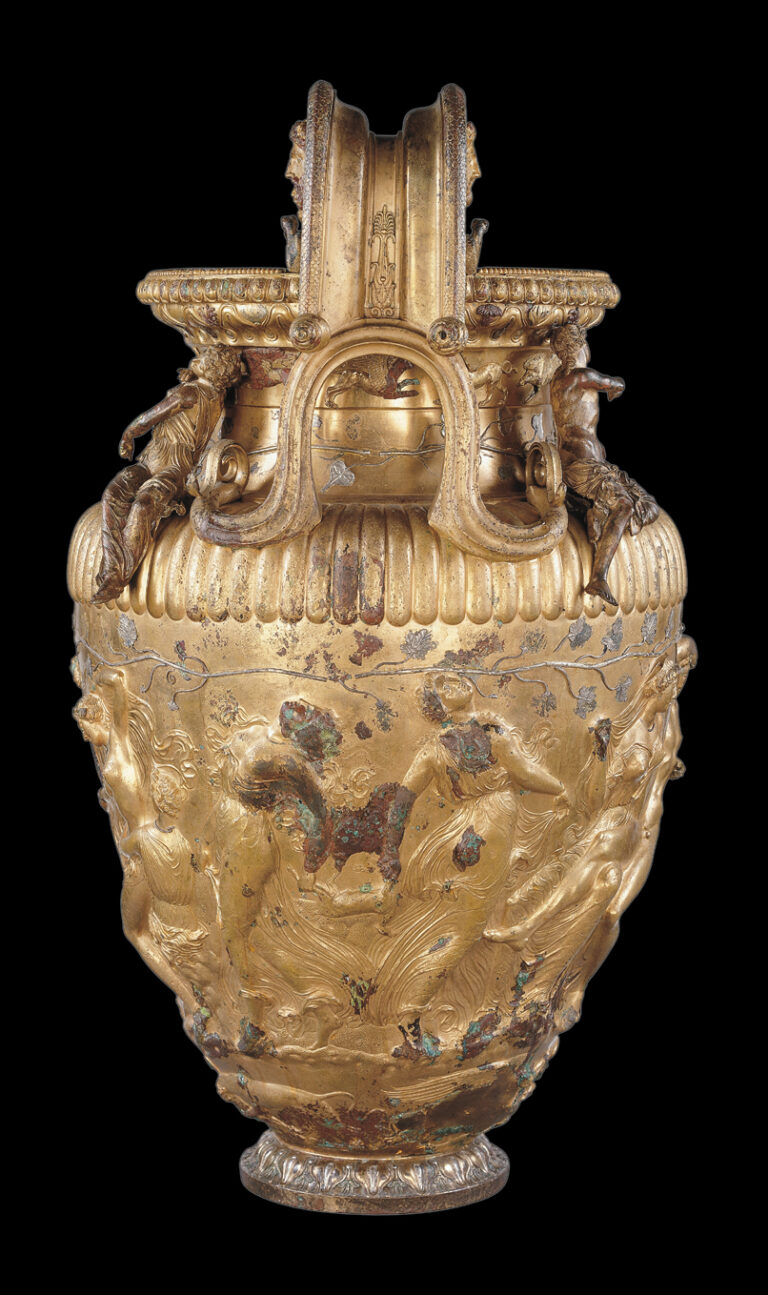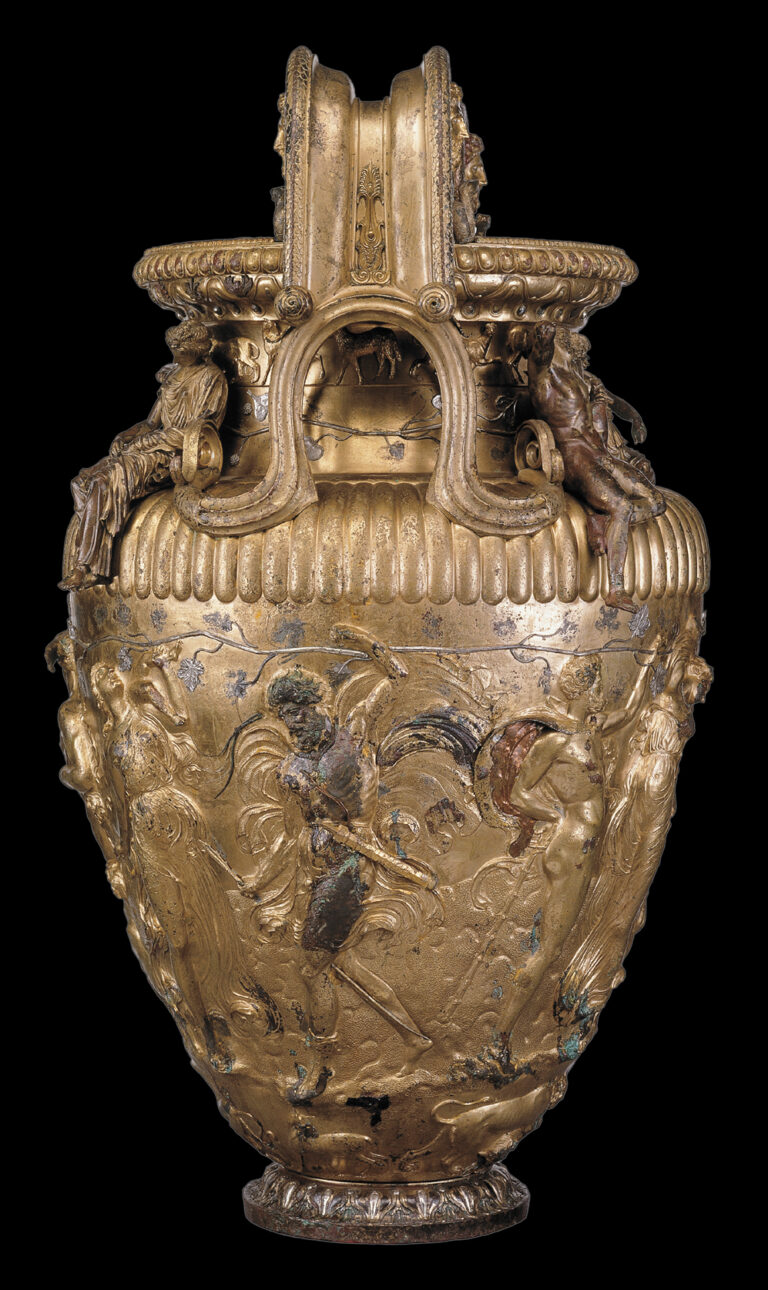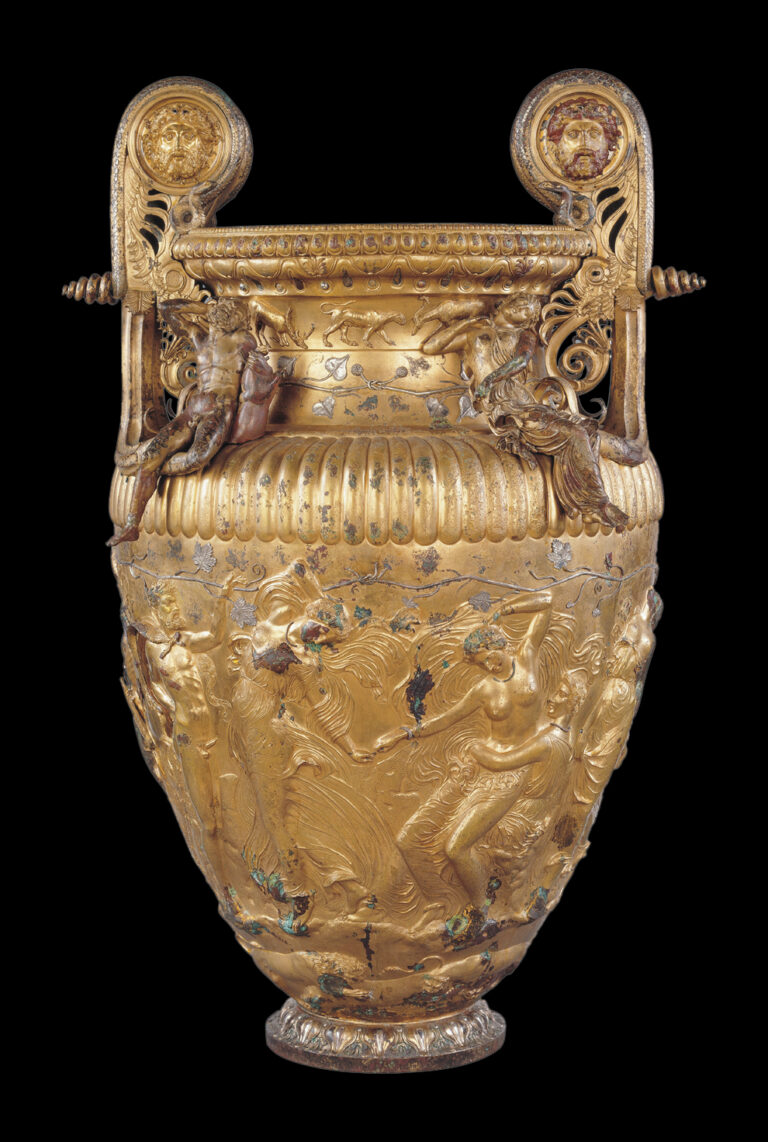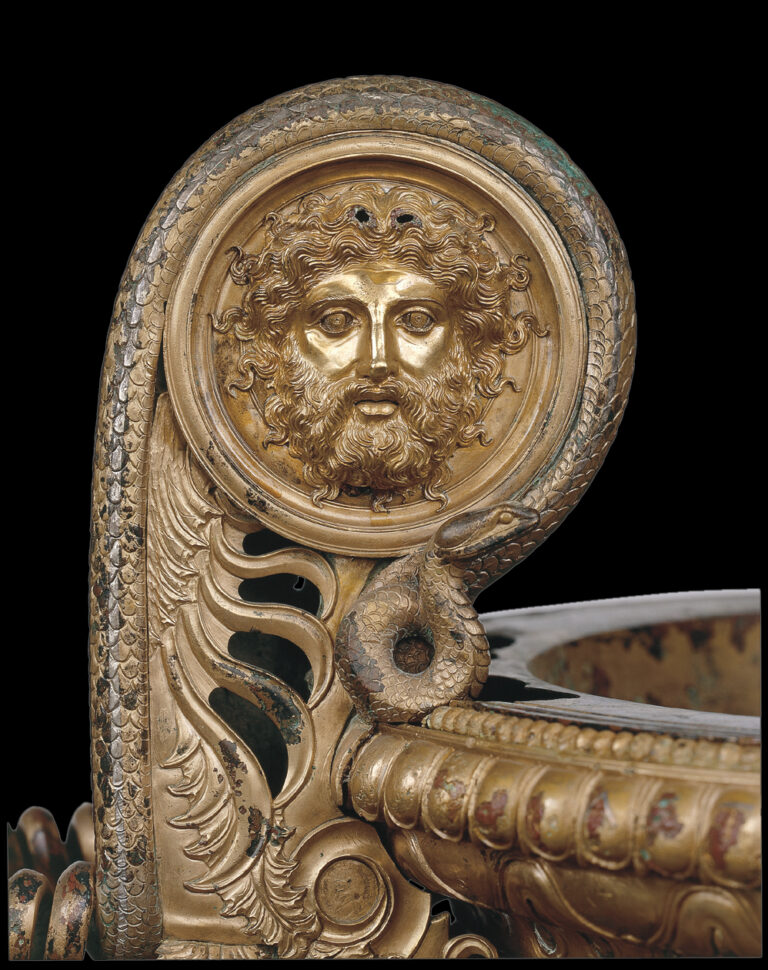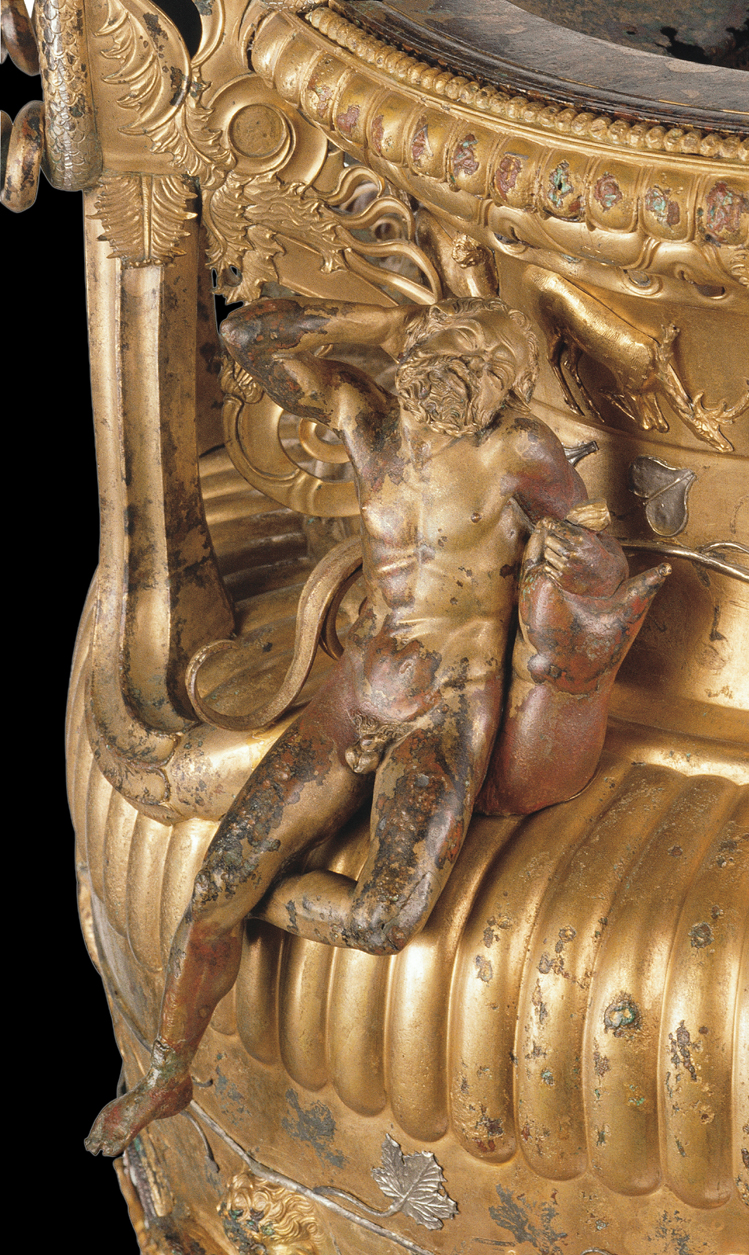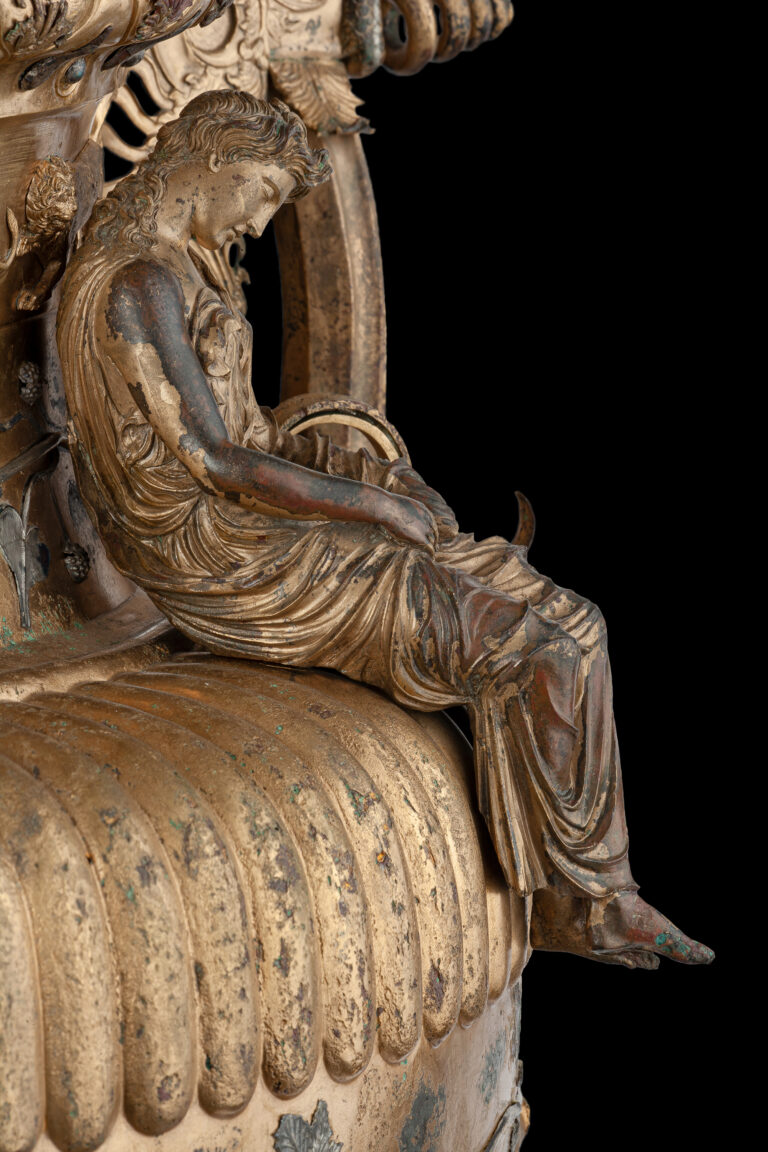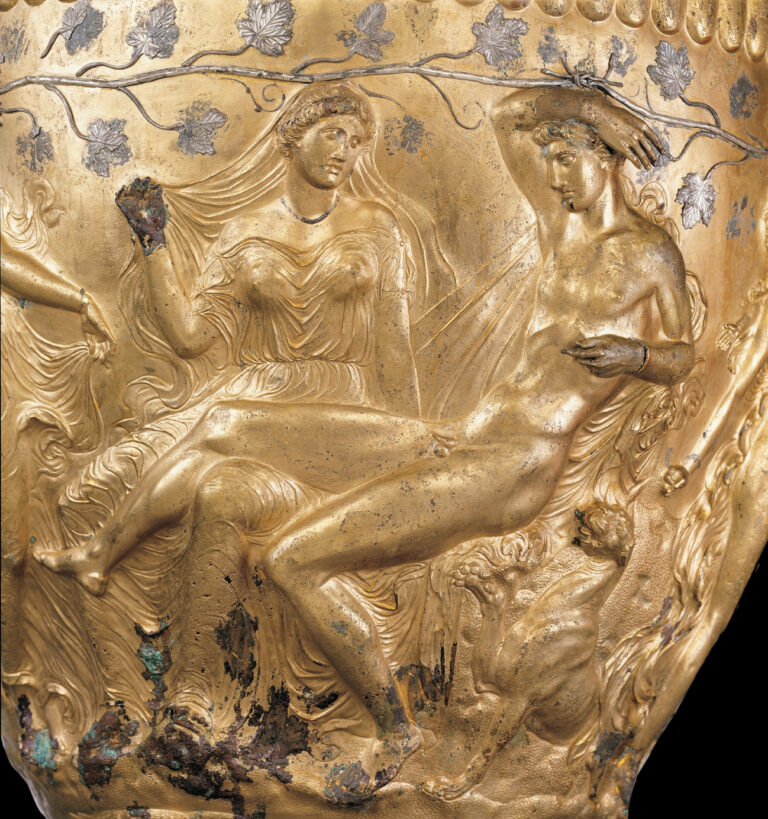The unparalleled splendor of the Derveni Crater
The undisputed masterpiece of the Archaeological Museum of Thessaloniki fully deserves its reputation as one of the most important works of ancient bronze craftsmanship - though nothing compares to the experience of seeing it in person.
If you were to see just one exhibit in the treasure-filled Archaeological Museum of Thessaloniki, it would undoubtedly be the famous volute Derveni Crater: a bronze vessel so lavishly and intricately decorated that no matter how long one studies it, new and astonishing details constantly emerge.
The crater was discovered in 1962 in Tomb B of the Derveni necropolis, about ten kilometers from Thessaloniki. The site yielded remarkable finds, with this unique vessel as its crowning jewel. Preserved intact, it stands as one of the most dazzling examples of ancient toreutics – the art of working metal in relief.
Though made of bronze, the vessel’s high tin content gives it the luxurious gleam of gold, while the scenes that cover every inch of its surface can only be described as orgiastic.
Originally intended for mixing wine with water, the crater dates to the 4th century BC, measures nearly one meter in height, weighs 40 kilograms, and was found alongside the cremated remains of the deceased and a wealth of precious grave goods: a gold coin of Philip II, a gold ring, golden pins, and a gilded bronze wreath – all inevitably overshadowed by the vessel that safeguarded them for centuries.
Though made of bronze, its high tin content gives the crater the radiant sheen of gold. Every inch of its surface is covered with exuberant decoration, the central scene depicting the sacred union of Dionysus and Ariadne, daughter of King Minos and Pasiphae.
Seated on a rock, the youthful, nude Dionysus rests his right leg upon Ariadne’s thigh, while she lifts her veil in a gesture of bridal revelation, familiar from ancient Greek iconography. Around the divine couple appear a panther, sacred to Dionysus; maenads in ecstatic dance; a Silenus; and another enigmatic male figure, thought to be Pentheus or perhaps King Lycurgus of Thrace, punished with madness for his impiety toward the god of wine.
The vessel’s breathtaking imagery is further enriched by garland-like friezes around its neck and base, adorned with vine and ivy branches, wild beasts, and mythical creatures. Even more striking are the four sculpted figures – Dionysus, a satyr, and two maenads – perched, almost exhausted, on the vessel’s shoulders, while the handles themselves are elaborately decorated with coiled snakes and relief busts of bearded deities, probably Heracles, Hades and Dionysus.
A true hymn to Dionysus and his dominion over the forces of nature, the Derveni Crater is attributed to a Macedonian craftsman, though strongly influenced by Attic art. As for its owner, an inscription on the rim names Astion, son of Anaxagoras from Larissa, linking the crater’s mythological imagery with history itself – perhaps referring to the aristocratic Aleuad family of Thessaly, whom Philip II exiled to the region of Derveni in 344 BC.
See also
A 2,000-year-old mummy at the Archaeological Museum of Thessaloniki
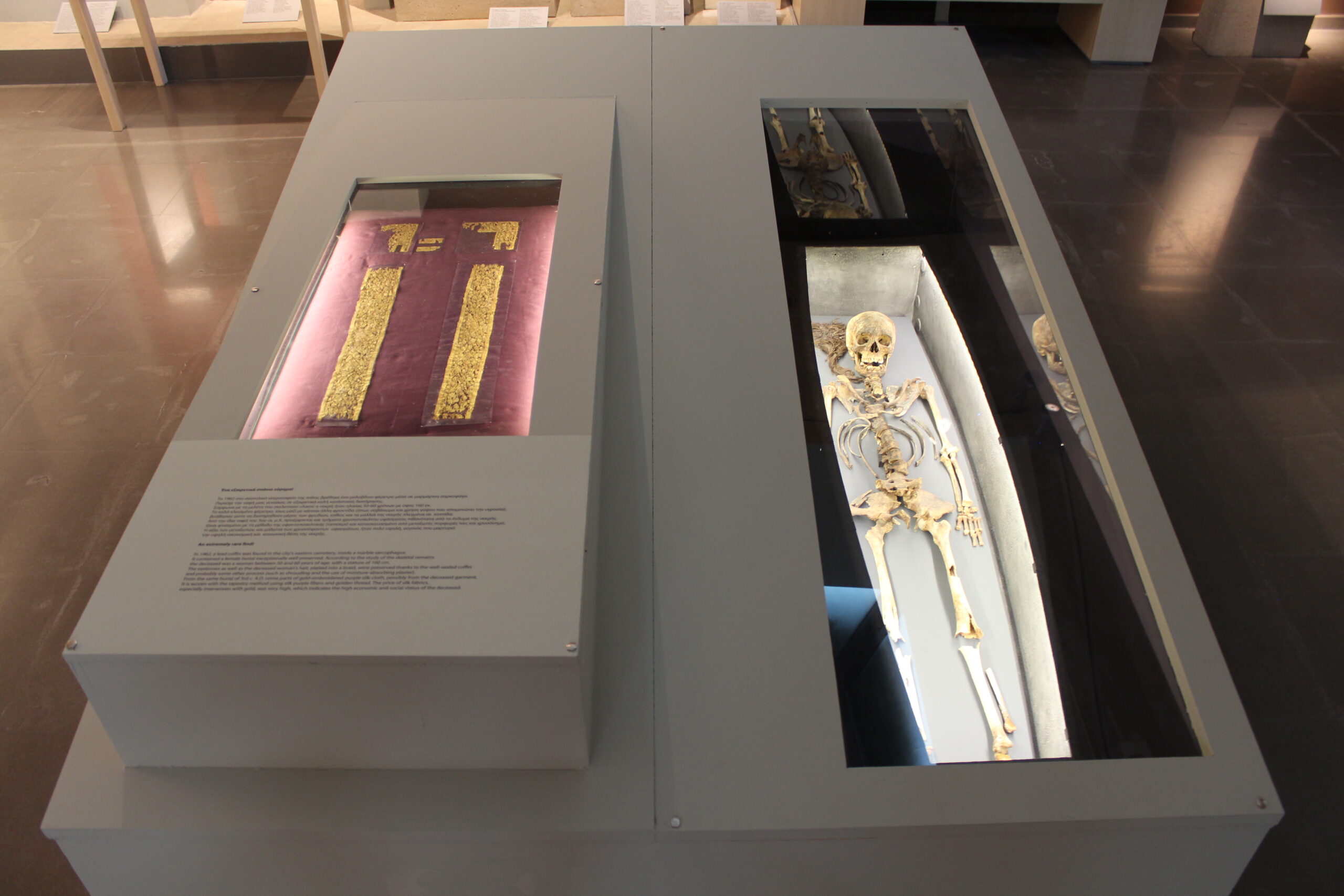
The story of a female mummy from the 4th century AD – with her chestnut braid still intact and a gold-embroidered silk fabric accompanying her on her eternal journey – reveals an exceptionally rare discovery for the Hellenic world.
The incredible adventures of the Lion of Cythera
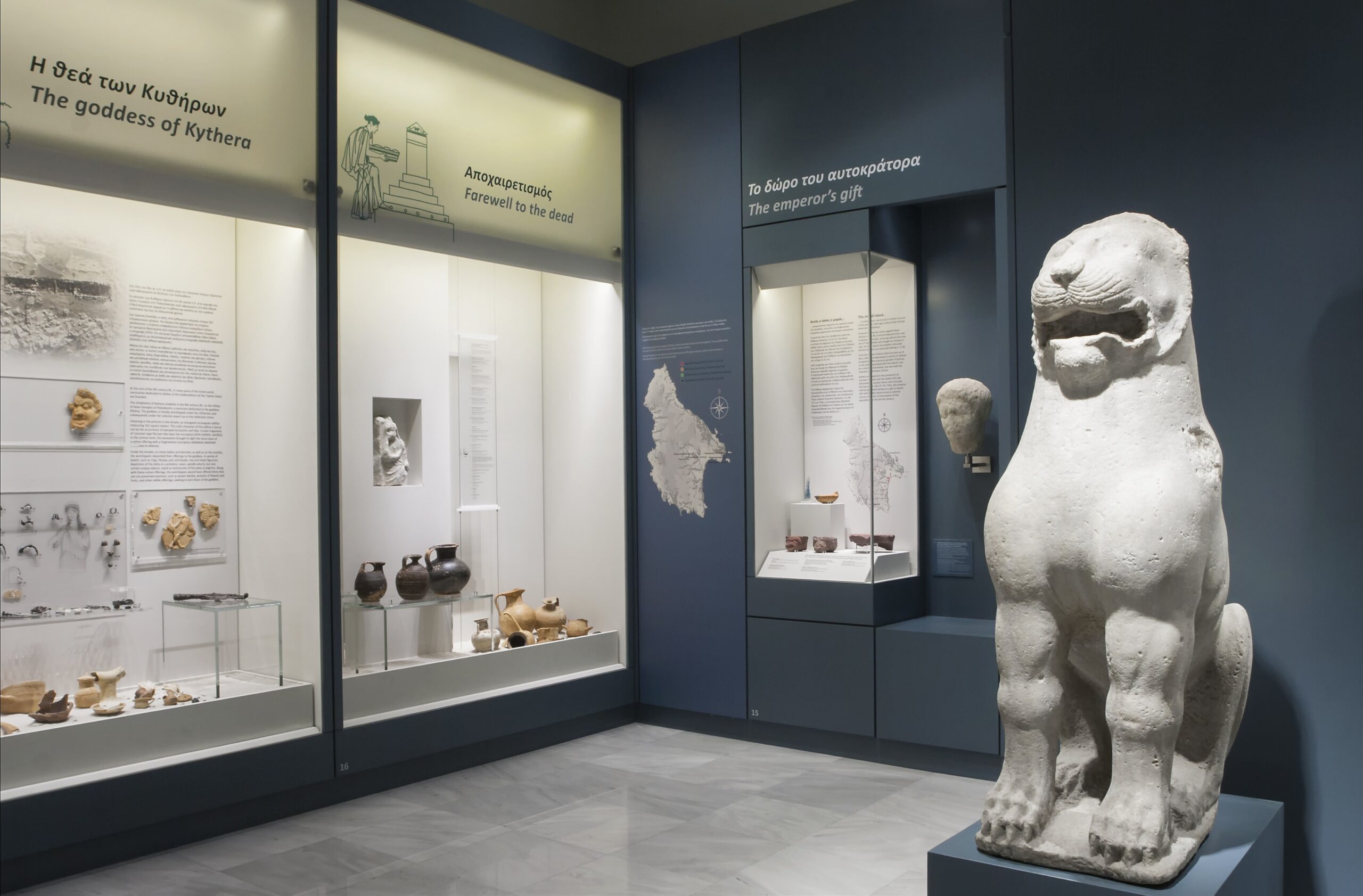
The powerful marble archaic lion that dominates the Archaeological Museum of Cythera has endured a true odyssey – changing hands and homes many times over before finally finding a permanent shelter.
The well-guarded secrets of producing an exact museum copy
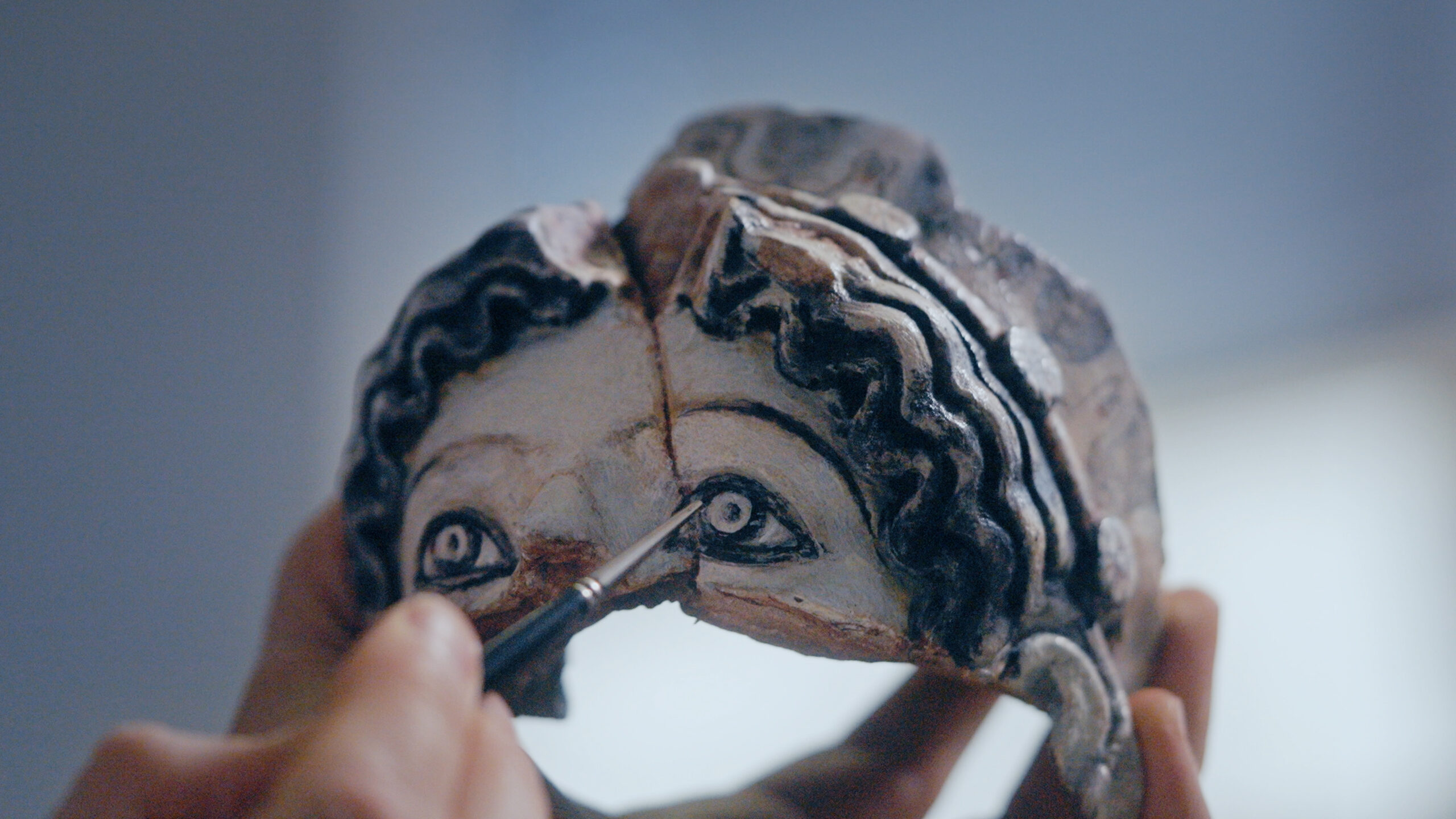
How are exact copies of emblematic museum exhibits made and what do we need to know about this clandestine process? What separates the good from the bad and what makes an exact copy a stand-alone work of art?

